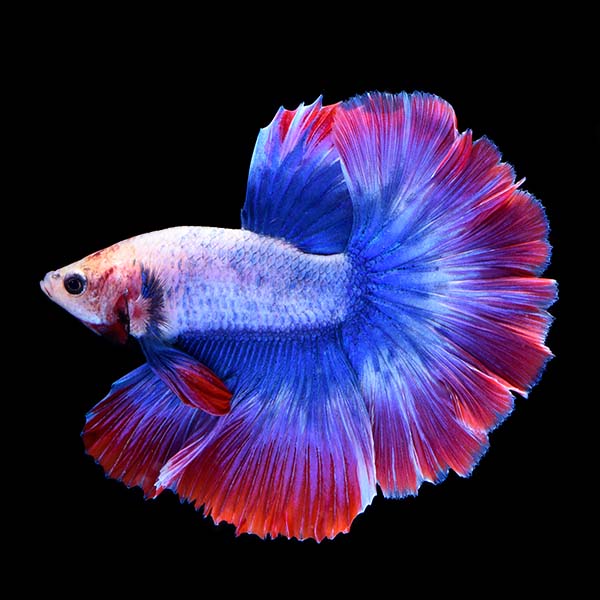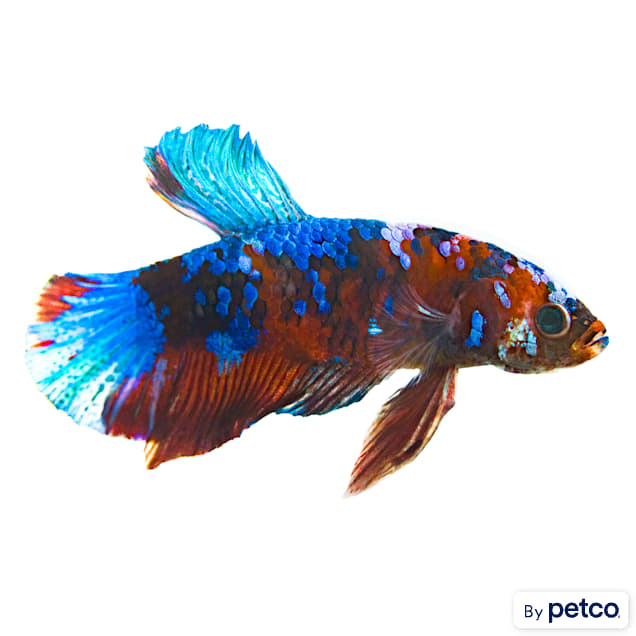Exactly How to Breed Betta Fish Effectively: Specialist Methods and Insights for Hobbyists Wanting To Broaden Their Betta Collection
Reproducing Betta fish requires a nuanced understanding of genetics and ecological problems, making it important for enthusiasts to approach the procedure with both diligence and care. Producing an optimum breeding setting, choosing the right sets, and observing the intricacies of their courtship actions are fundamental steps that can substantially influence the result.
Understanding Betta Fish Genetics
Comprehending the genetics of Betta fish is vital for successful breeding, as it affects attributes such as shade, fin form, and behavior. Betta fish display a varied selection of colors and patterns, mostly determined by their genetic makeup.
Along with pigmentation, fin morphology is an additional significant element of Betta genetics (betta fish). The sizes and shape of fins are affected by various genes, consisting of those that determine whether the fins are brief, long, or veil-shaped. Comprehending these genetic variants assists breeders anticipate the phenotypic end results of their offspring
Furthermore, behavioral characteristics such as aggressiveness and territoriality can also be influenced by genes. These behaviors play a vital duty in the breeding process, as they can affect spawning success and the overall temperament of the resulting fry. By adequately recognizing these genetic principles, breeders can make educated decisions, ultimately boosting their reproduction programs and accomplishing preferable results.
Preparing the Reproduction Atmosphere
Producing an optimum reproduction atmosphere is essential for the successful reproduction of Betta fish. The first step in preparing this atmosphere is to choose an appropriate breeding tank, ideally varying from 5 to 10 gallons. This dimension enables for sufficient swimming room and the facility of regions. The tank ought to be equipped with a heater to keep a stable temperature in between 78 ° F and 80 ° F, which is essential for encouraging generating habits.
Following, take into consideration making use of a sponge filter or an air rock to give gentle water blood circulation without producing solid currents that can stress the fish. It is necessary to install plants or reproducing cones to use concealing spots and advertise convenience for the female throughout the spawning procedure. Drifting plants, such as Java moss or water sprite, can also develop an extra natural environment while helping with bubble nest building by the male.
Prior to introducing the reproducing sets, make certain the water is conditioned and without hazardous chemicals, such as chlorine or heavy steels. betta fish. Normal water adjustments ought to be carried out to preserve optimum water quality, enhancing the possibilities of successful reproduction. With these preparations in position, the breeding atmosphere will support the wellness and health of both Betta fish
Picking Reproduction Pairs
Selecting the right breeding sets is important for achieving successful Betta fish reproduction. Healthy Betta fish show vivid colors, clear eyes, and energetic behavior.
Personality is an additional essential consideration, as Betta fish are understood for their aggressive nature. It is recommended to choose a male and lady that show suitable personalities to decrease anxiety throughout the reproducing process. A tranquil man can encourage a smoother courtship, while a woman that is also aggressive may interfere with the process.
Genetic history additionally plays a considerable duty in the quality of the spawn. Reproducing fish that are genetically diverse can decrease the risk of hereditary health and directory wellness problems and enhance the total vigor of the fry. It is helpful to look into the family tree of both the male and lady, focusing on preferable qualities such as fin type, color scheme, and size.
The Reproduction Refine
The breeding procedure of Betta fish calls for cautious planning and attention to detail to guarantee a successful result. It is essential to prepare an appropriate reproduction container, preferably a 5-10 gallon fish tank with a temperature preserved at 78-80 ° F. The container ought to be geared up with a heater, filter (ideally sponge kind to prevent solid currents), and plenty of aquatic plants for the woman to conceal.
When the environment is established, present the selected breeding pair to the tank, enabling them to acclimate. Observe their actions; the man will display fancy courtship routines, consisting of flaring his fins and building a bubble nest. If the female shows rate of interest, she will display vertical red stripes showing readiness for spawning.
When the female is receptive, the pair will certainly involve in a mating accept, throughout which the male feeds the eggs. Preserving optimum water conditions during this duration is necessary for the advancement of healthy and balanced Betta fry.
Caring for Betta Fry

Feeding Betta fry is essential, as they need a diet regimen high in healthy protein. Originally, they can be fed infusoria or fluid fry food, transitioning to finely smashed top quality pellets as they grow. Feed tiny sections numerous times a day to encourage healthy and balanced growth without overwhelming the container with uneaten food.

As click reference they grow, check their growth carefully and separate any kind of aggressive people to avoid damage. By offering a supporting setting and proper nourishment, enthusiasts can effectively increase Betta fry into vibrant, healthy fish, inevitably enhancing their breeding ventures.
Verdict
Effective Betta fish reproduction calls for thorough attention to hereditary choice, environmental problems, and take care of the fry. By recognizing the genes of Betta fish and preparing an appropriate reproduction environment, hobbyists can improve the possibilities of producing vibrant, healthy spawn. Picking suitable reproduction sets and carefully keeping track of the courtship and generating processes are necessary. Lastly, giving optimal treatment for the fry guarantees their healthy and balanced advancement, adding to a thriving Betta collection.